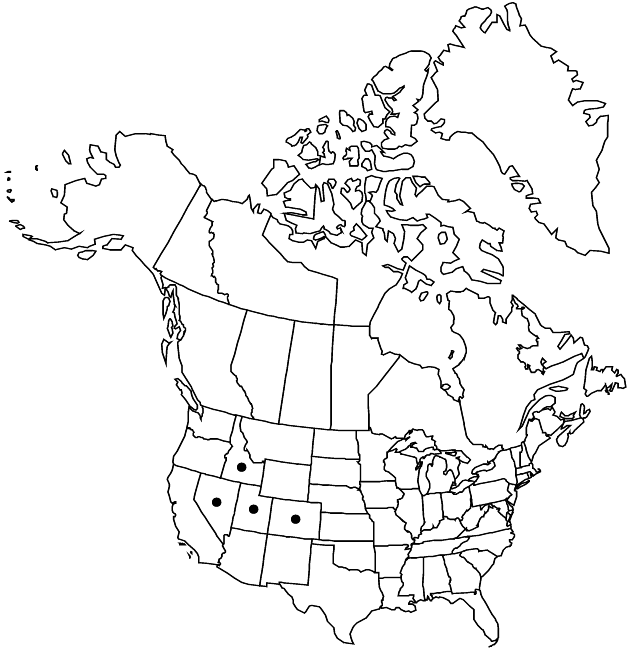Cirsium scariosum var. thorneae
Great Basin Naturalist 42: 201. 1982.
Plants erect, caulescent (rarely nearly acaulescent), 20–130 cm. Stems distally short-branched to openly much-branched throughout, leafy, glabrous or villous with septate trichomes. Leaves: blades oblong, oblanceolate, or narrowly elliptic, usually pinnately lobed more than halfway to midveins, abaxial faces glabrous or gray-tomentose, adaxial glabrous; distal usually deeply divided, fiercely armed with stout spines, the longer 1–3 cm. Heads 1–10+, sessile or pedunculate, solitary or crowded near tip of main stem or branches, usually subtended and ± overtopped by distal leaves. Involucres (broadly ovoid to hemispheric) 2.5–3.5 cm. Phyllaries: outer and mid lanceolate to narrowly ovate, spines slender to stout, 2–8 mm; apices of inner usually abruptly expanded into scarious, erose-toothed appendages. Corollas white to dull purple, 29–34 mm, tubes 14–18 mm, throats 6.5–9 mm, lobes 7–8.5 mm; style tips 5–6.5 mm. Cypselae 4.5–5 mm; pappi 20–27 mm.
Phenology: Flowering summer (Jun–Sep).
Habitat: Meadows, streamsides, valley bottoms, often in saline soils
Elevation: 1500–2200 m
Distribution

Colo., Idaho, Nev., Utah.
Discussion
Variety thorneae grows mostly in the Basin and Range province of Utah with populations in eastern Nevada, southern Idaho, and western Colorado.
Selected References
None.